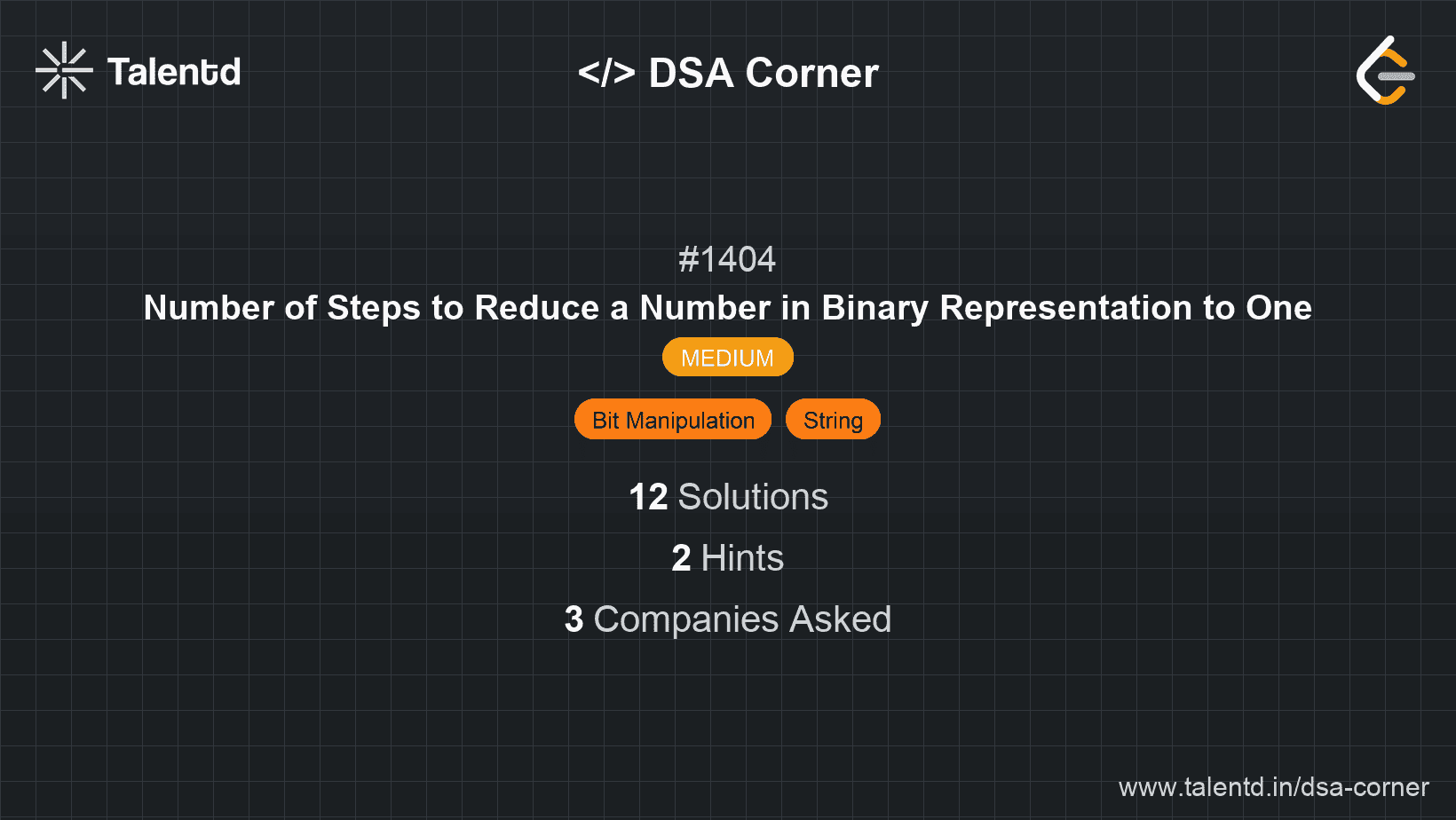
Sponsored
Sponsored
This approach involves simulating the reduction steps performed directly on the binary number string. We traverse the binary string backwards, simulating each step based on whether the current number is odd or even. Additionally, whenever we encounter a carry after incrementing an odd number, we propagate the carry to handle the necessary binary addition.
Time Complexity: O(n), where n is the length of the string s.
Space Complexity: O(1), only a constant amount of extra space is used.
1using System;
2
3public class Solution {
4 public int NumSteps(string s) {
5 int steps = 0, carry = 0;
6 for (int i = s.Length - 1; i > 0; i--) {
7 if ((s[i] - '0' + carry) % 2 == 0) {
8 steps += 1;
9 } else {
10 steps += 2;
11 carry = 1;
12 }
13 }
14 return steps + carry;
}
public static void Main() {
Solution solution = new Solution();
Console.WriteLine(solution.NumSteps("1101")); // Output: 6
}
}The C# solution follows the same principles as in Python and C++. It keeps track of operations alternately increasing steps and carries. The solution pattern consistently performs binary operations based on the current state given the calculated carry.
Convert the binary representation to a decimal integer, then simulate the operations using intuitive arithmetic operations. This approach avoids character-level string manipulations.
Time Complexity: O(n) for initial conversion, O(log m) for operations (where m is the integer value).
Space Complexity: O(1), after input conversion.
This implementation converts the binary input to a decimal integer using Python's base conversion. Then the function reduces the number using arithmetic operations analogous to the original rules (dividing when even or incrementing plus dividing when odd).